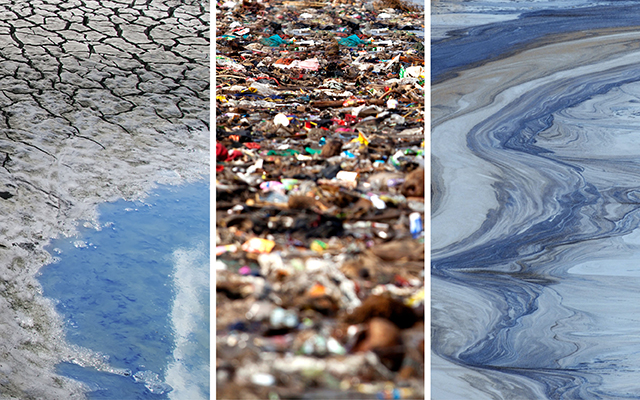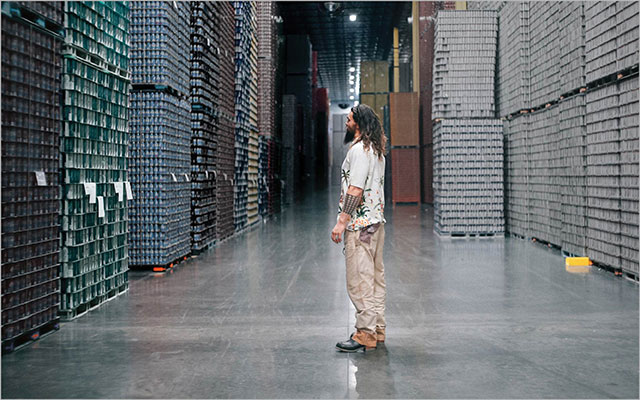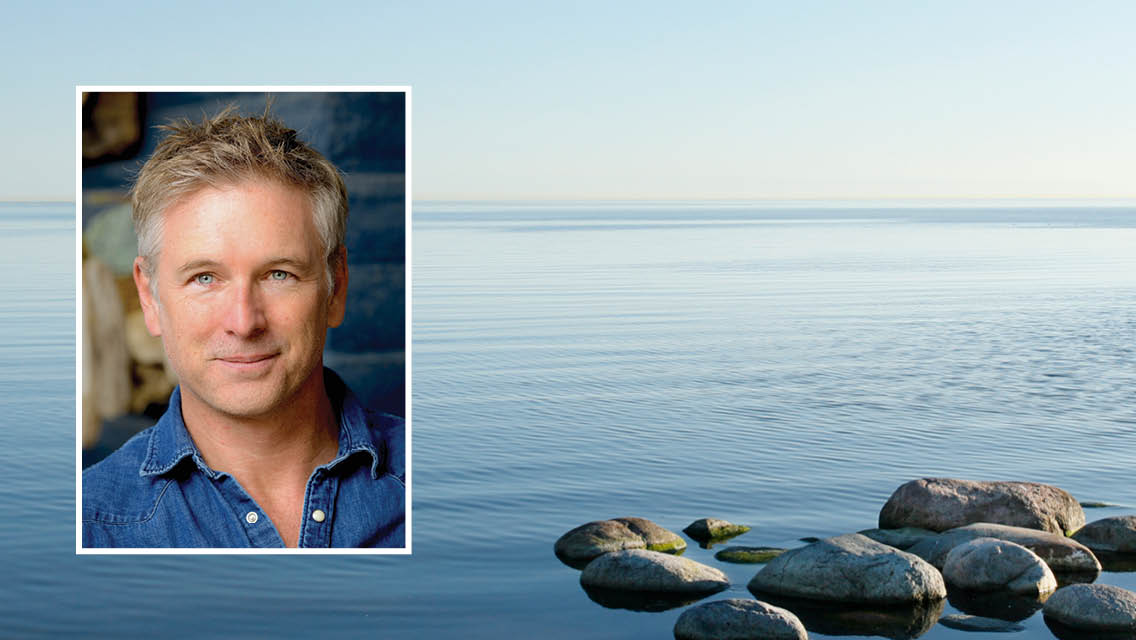Come on, Cash!” With my dog at my heels, I follow the blue-blaze trail markers through a festival of colors along Lake Superior. Red and gold hues of birch and cedar mix with spruce to create a landscape any Impressionist painter or Bob Ross would admire enough to capture on canvas.
The five Great Lakes — Superior, Michigan, Huron, Erie, and Ontario — stretch from Minnesota to New York, from Ontario to Quebec. They hold 21 percent of the world’s surface freshwater supply. Essential for sustaining biodiversity, the lakes are necessary for human survival, too. Today, they provide water for the daily needs of 40 million residents, irrigation, and even beer brewing.
Indigenous and First Nations people have resided along the Great Lakes for centuries. Following a prophecy, the Lake Superior Ojibwe moved from their historic homeland on the Atlantic coast and traveled west until they found the “place where food grows on water.” But climate change’s effects in the Great Lakes region threaten a traditional food source — manoomin (wild rice) — and the cultural practice of harvesting it for food.
Warming global air temperatures decreased ice cover on the Great Lakes by more than 71 percent between 1973 and 2010. This led to earlier spring thaws and rising summer surface-water temperatures from 1995 through 2015 — and the trend has continued.
Climate change will bring more extreme weather events to the region. It will also have an impact on fish migration and breeding, and will increase the size and feeding rates of invasive nonnative aquatic species.
Conservation Havens
My dog and I head up a flight of wooden stairs from Minnesota’s Cascade River to intersect with the Superior Hiking Trail. The 300-mile footpath hugs Lake Superior’s rocky ridges, allowing hikers to enjoy views of waterfalls, the Sawtooth Mountains, and waves crashing on the shore below.
Superior National Forest’s deciduous and evergreen trees sprawl across 3 million acres. They kiss the western edge of Superior, or Gichigami (Ojibwe for “great sea”), and stretch north to the Minnesota–Canada border.
In a time of rapid deforestation and habitat loss worldwide, Great Lakes boreal forests are crucial sources of food and shelter for wildlife.
Tettegouche — one of nine Minnesota state parks along Lake Superior’s North Shore — is home to critical peregrine falcon nesting habitat. Widespread use of DDT pesticide during the 1950s poisoned the raptors and thinned their eggshells, resulting in reproductive failure.
The pesticide was banned in 1972, which led Cornell University ornithologists to start captive-breeding programs. In 1981, the raptors’ first releases in the Great Lakes region began, and populations have been restored in 13 states and two Canadian provinces.
Other formerly endangered and threatened species, including the gray wolf and elusive Canada lynx, have also found refuge in Great Lakes national forests.
Despite these comebacks, plant and animal species continue to decline. The most recent fish study of Lake Huron and its tributaries, conducted in the 1970s, identified 129 species: Twenty are now imperiled or gone.
Unwelcome Guests
As Cash and I climb, we look down on a pair of wader-clad fly-fishers casting in the Cascade for rainbow and brook trout. Anglers are common here — especially in late summer and early fall when Chinook salmon make their annual upriver journey to spawn. Both sport and commercial fishing are big on the Great Lakes.
That could all be threatened: Some experts consider invasive aquatic species the chief nemesis of the lakes. It’s estimated that 180 plant and animal species have invaded the system already.
Zebra mussels exemplify the havoc these newcomers can wreak. Natives of Eurasia, these fingernail-size mollusks likely arrived here during the 1980s via ballast water discharged from large European ships.
These invasive mollusks attach to and incapacitate native mussels; they also filter out algae that native species need for food. They’ve since colonized the Great Lakes, as well as waterways as far away as Texas and California.
Resiliency Through Time
Human footprints on the lakes run deep. Polychlorinated biphenyls (PCBs) — toxic compounds used in coolants until they were banned in 1979 — are still found in lake sediment.
The 1960s saw Lake Erie pronounced dead after an overload of phosphorous from municipal waste. The chemical promotes algal growth, which then depletes oxygen levels and poses a threat to marine-dwelling species and drinking water.
Despite improved pollution-control policies, phosphorous levels remain high due to agriculture runoff as well as other sources. Algal blooms are again a common sight along Lake Erie and Lake Ontario, causing the closure of swimming and fishing areas. The sludge-like blooms contribute to waterborne illness.
Nuisance algae also affect tourism hotspots like the quaint coastal villages dotting Wisconsin’s Door County along Lake Michigan.
Plastic is another contaminant. Microplastics are now found throughout all five lakes, and bottle caps and plastic bags are becoming as common as seashells on their beaches.
Still, as I sit along Superior’s jagged basalt shoreline watching Cash bark and run at crashing foam-crested waves, I’m heartened that a contingent of nonprofit organizations and Indigenous groups are organizing to protect the Greats.
It’s also empowering to know that simple everyday actions can help boost their resilience. And resiliency is a trait every living thing on Earth will need as we face the uncharted waters of climate change.
Water-Wise
Current stressors on delicate Great Lakes ecosystems are many: damming, development, wetlands loss, industrial waste, oil spills, and mining accidents. Yet simple actions can support these lakes, as well as waterways worldwide.
Ditch hitchhikers by rinsing and cleaning watercraft after use, including ballasts and bait tanks, live wells, and other areas that take time to dry. Never release aquarium fish or plants into waterways.
Avoid using chemical pesticides and insecticides — as well as fertilizers, which add phosphorous and nitrogen to water supplies via runoff. Replace your lawn with native plants to improve the filtration of pollutants. For other greener gardening tips, visit “9 Ways to Help Pollinators“.
Discard medications safely. Traces of pharmaceutical drugs are turning up in freshwater supplies. For disposal tips, visit “Are There Drugs in Your Tap Water?“.
Avoid single-use plastics. For tips on alternatives, visit “18 Ways to Live With Less Plastic“.
Protect the waters from microplastics by installing a washing-machine filter to capture microplastics emitted from synthetic textiles.
Vote for officials who will consider stricter environmental safeguards, improve failing infrastructure, and support habitat-restoration projects.
Support groups working to defend the Great Lakes; consider helping out or donating to the Alliance for the Great Lakes (greatlakes.org) or the federal government’s Great Lakes Restoration Initiative.
This article originally appeared as “In Deep Water” in the October 2021 issue of Experience Life.





This Post Has One Comment
Hi Heidi,
I am involved in a project to restore the bottom ( the sediments) of the Baltic Sea from phosphorus with a new invention called “Activated limestone”. The Baltic sea has large areas of dead bottoms that comes from old emissions and one problem is to much phosphorus that causes algea bloming. I saw your article about the Great lakes and wonders if you have the same problem with dead bottoms and algae blomings there.
The invention comes from research from Stockholm University and a EU-based project called “Seabased”.
If you like to know more please let me know.
Best
Claes